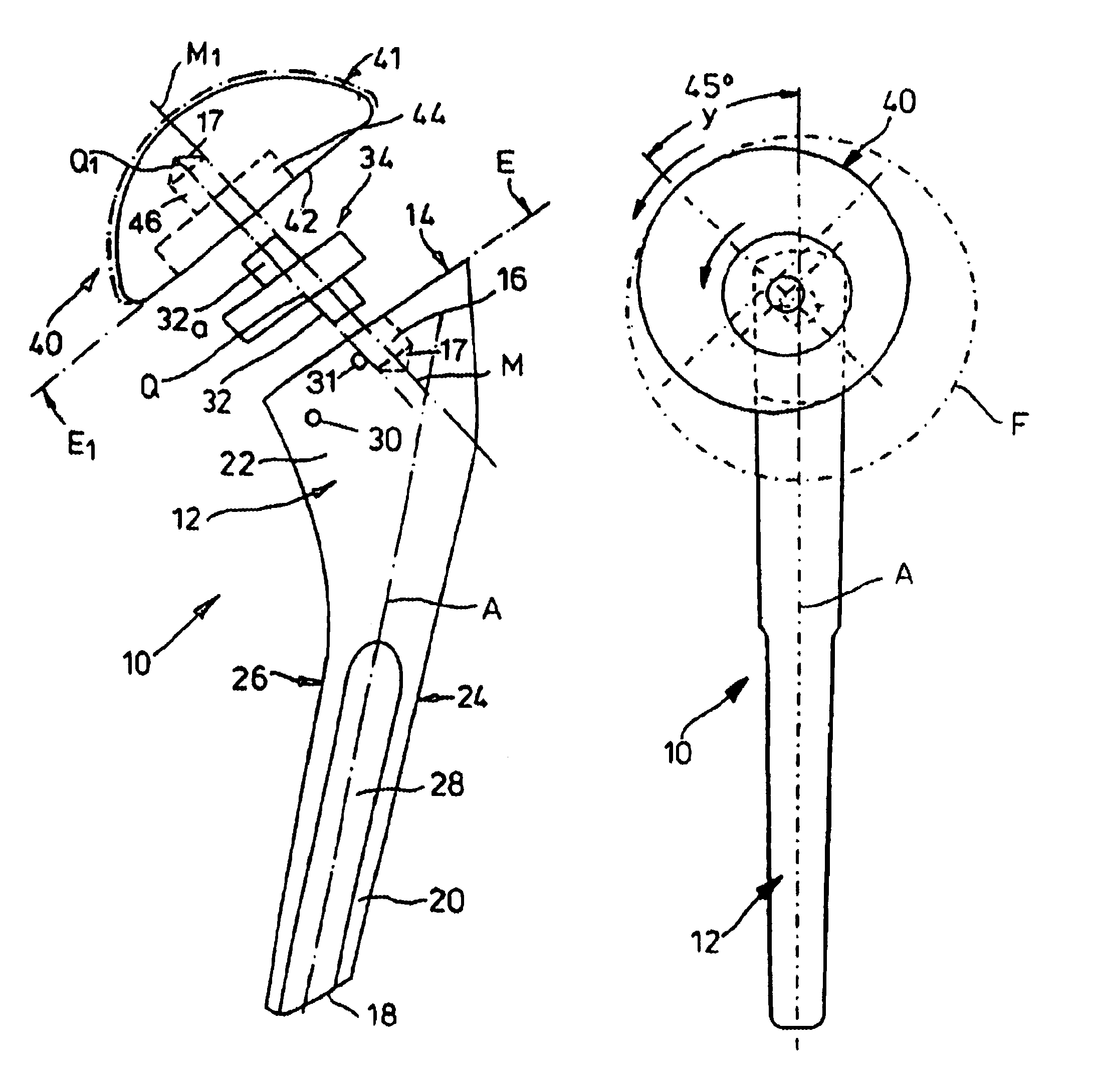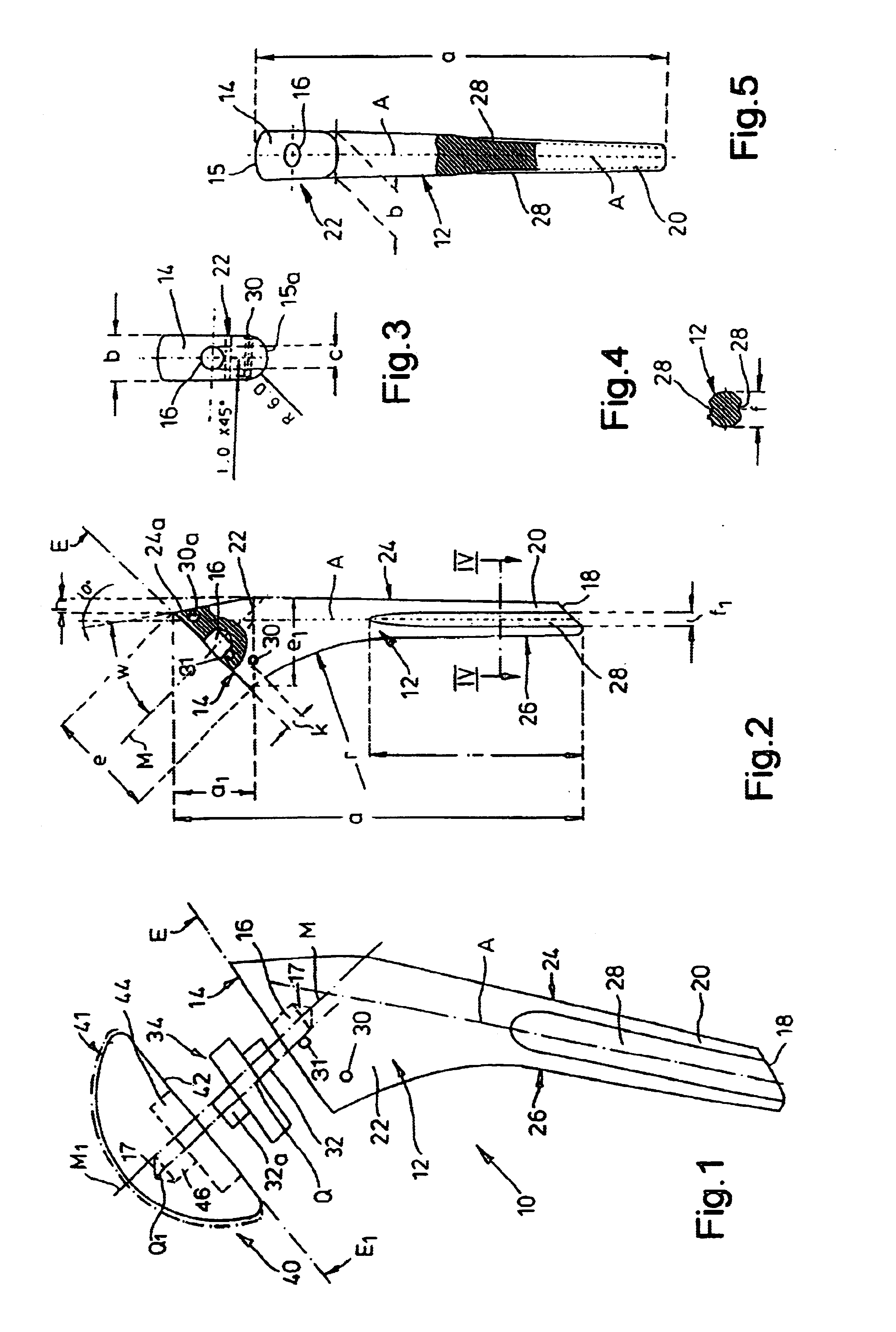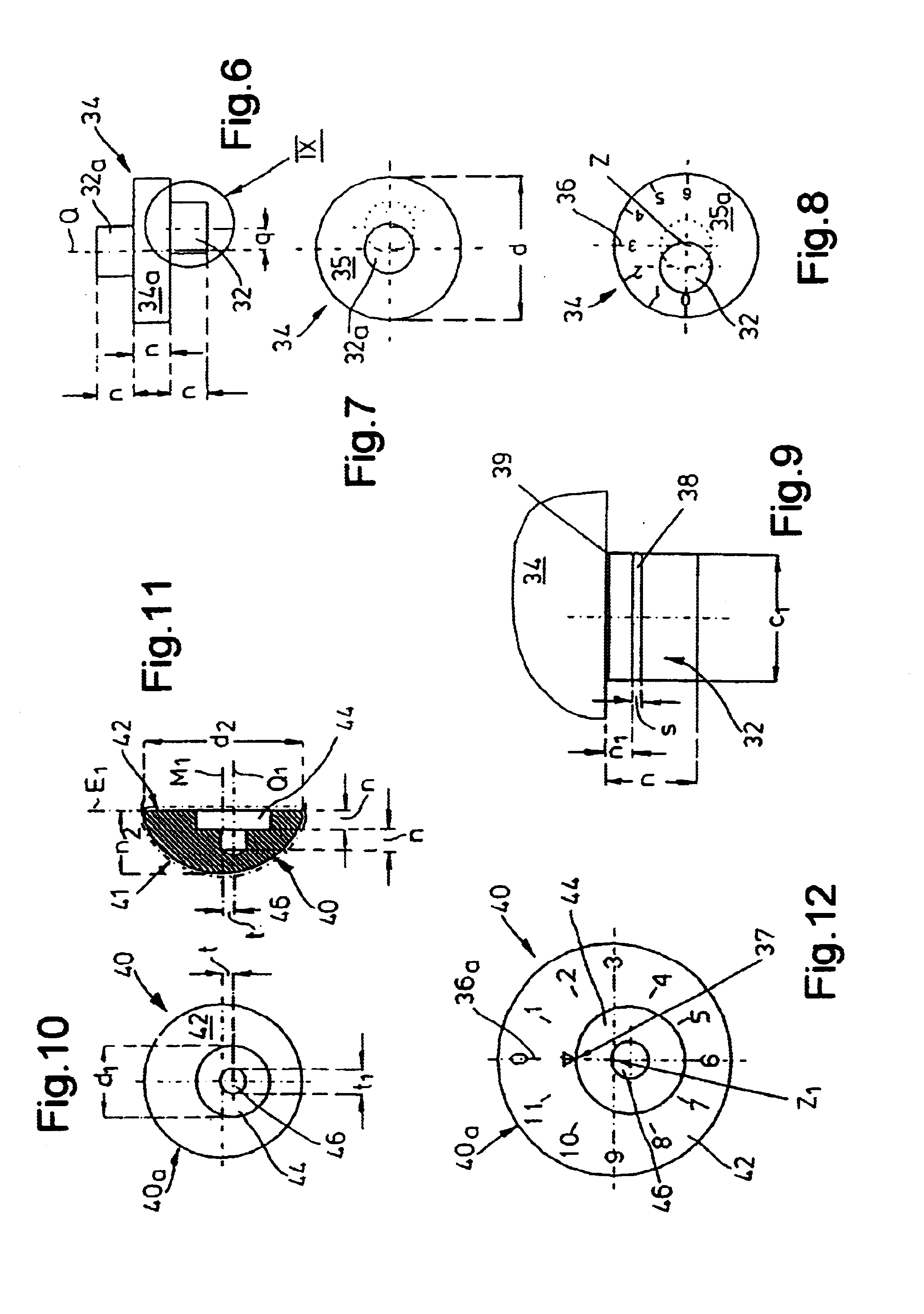Implantable prosthesis having at least two sections which can be displaced in relation to one another, and the use of displaceable sections
- Summary
- Abstract
- Description
- Claims
- Application Information
AI Technical Summary
Problems solved by technology
Method used
Image
Examples
Embodiment Construction
A prosthesis 10 for a human shoulder joint (not shown) comprises a shaft 12 with an end face 14 whose center axis M is inclined relative to the longitudinal axis A of the shaft 12 at an angle w of 45.degree.. The greatest length a of the shaft 12 measures 125 mm, the width b of the end face 14 measures about 14 mm and the length e thereof measures about 23 mm. The projection length e', which can be seen in FIG. 2, of the end face 14 into a plane which crosses the longitudinal axis A at a right angle is then 27.3 mm.
The center axis M of the end face 14 determines therein the position of a blind hole 16 of a diameter d of about 7 mm with a conical end 17. Opposite the free shaft end--which terminates at a suitable base surface 18--of a width f of 11 mm the head region 22 of the shaft 14 is enlarged to the length e or e.sub.1. The upper, slightly rounded narrow edge 15 of the end face 14 is displaced with respect to a condition of alignment with the side 24 of its shaft by virtue of an...
PUM
 Login to View More
Login to View More Abstract
Description
Claims
Application Information
 Login to View More
Login to View More - R&D
- Intellectual Property
- Life Sciences
- Materials
- Tech Scout
- Unparalleled Data Quality
- Higher Quality Content
- 60% Fewer Hallucinations
Browse by: Latest US Patents, China's latest patents, Technical Efficacy Thesaurus, Application Domain, Technology Topic, Popular Technical Reports.
© 2025 PatSnap. All rights reserved.Legal|Privacy policy|Modern Slavery Act Transparency Statement|Sitemap|About US| Contact US: help@patsnap.com



